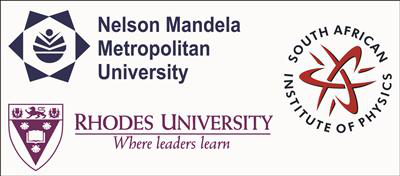Speaker
Apply to be<br> considered for a student <br> award (Yes / No)?
Yes
Please indicate whether<br>this abstract may be<br>published online<br>(Yes / No)
Yes
Would you like to <br> submit a short paper <br> for the Conference <br> Proceedings (Yes / No)?
Yes
Abstract content <br> (Max 300 words)<br><a href="http://events.saip.org.za/getFile.py/access?resId=0&materialId=0&confId=34" target="_blank">Formatting &<br>Special chars</a>
The one-dimensional organic radical salts of dicyanoquinonediimine, M(R1,R2-DCNQI)2, have an interestingly high conductivity along the c-axis. Depending on composition, these crystals exhibit spectacular phase changes. The conductive axis can become insulating at a sample specific temperature within 1K. Few compositions even show a sudden re-entry to the metallic phase upon further cooldown.
During crystal growth, M can be chosen to be a range of metallic ions. The R1,R2 sidegroups of the organic ligands can be selected as pleased, making the metal-to-insulator transitions highly tuneable. Measuring the dynamics of the crystal structure with atomic resolution during this structural phase change (called a Charge Density Wave formation), helps understand the dominant interactions of the order parameters in the materials.
Femtosecond Electron Diffraction (FED) can capture these structural changes with the relevant temporal resolution (sub-ps). During an experiment, an ultrashort light pulse (the pump) is shot at the sample to drive the transition. It is probed by an ultrashort electron pulse. The acquired electron diffraction pattern taken in transmission from a 30nm thin freestanding sample, reveals a sub-ps snapshot of the atomic structure. A complete dynamical transition movie is acquired by changing the arrival time between the pulses.
Our home-built set-up, equipped with a helium cryostat, is a significant improvement from initial FED set-ups. Its outstanding pressure (~10-10mbar) prevents condensation onto samples at typical sub-60K phase transition temperatures. The electron probe's brightness, stability and beam quality ensures sufficient sensitivity for ligands with low scattering cross sections.
Our research goals are getting closer by the availability of ultrathin freestanding samples and our operational specialised machine.
Main supervisor (name and email)<br>and his / her institution
Heinrich Schwoerer
heso@sun.ac.za
Stellenbosch University
Level for award<br> (Hons, MSc, <br> PhD, N/A)?
PhD

